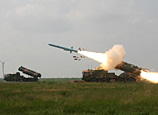
Structural tax cuts useful in macro-control
"The Chinese economy is close to bottoming out, but will face greater difficulties in the future," said Gao Peiyong, director of the National Academy of Economic Strategy under the Chinese Academy of Social Sciences. The room for macroeconomic regulation and control is narrowing. China has maintained expansionary economic policies for four years since 2008, and the effects of these policies are wearing off in the context of an economic slowdown. Furthermore, various challenges concerning the economic structure and inflation have become more serious. Therefore, the country must further promote economic restructuring and price stability, while ensuring stable economic growth. Under such circumstances, structural tax cuts have become largely a balancer among various economic policies, and the main focus of China's macroeconomic regulation and control.
However, Ba Shusong, deputy director of the Institute of Financial Studies under the Development Research Center of the State Council, believes that there are also some favorable factors for promoting moderate economic recovery next year, including improving exports, steadily growing external demand, declining inventory pressure, and the recovering real estate market. Infrastructure investment will continue to be a major driving force behind the increase in fixed-asset investment, and domestic consumption will also witness steady growth.
Ba said that it will be more important to solve structural problems as the cyclical downturn is coming to an end, and cyclical fluctuations are becoming milder. Such structural changes indicate that China will try to strike a balance between cyclical policies and structural reforms next year by adopting appropriate macroeconomic policies.















 Tell the whole world how I love you
Tell the whole world how I love you


![]()
